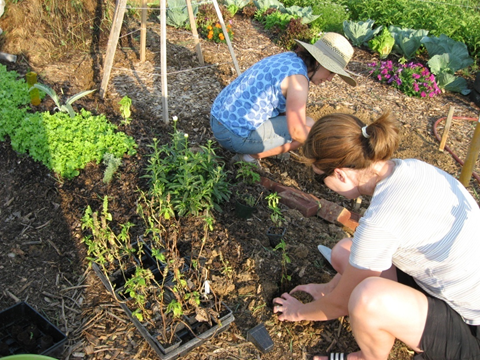Many publications are available to guide consumers in developing and planting edible gardens at home or in community garden plots for personal use, as well as for school and community gardens where produce is shared with others. We would like to highlight a few resources that specifically address keeping your fresh fruits and vegetables safe to eat and share.
On this Page

Home Garden Food Safety
 Food Safety Tips for Your Edible Home Garden (English) (Spanish)
Food Safety Tips for Your Edible Home Garden (English) (Spanish)
This publication from the University of California provides an overview of home garden and gardening practices that are important to consider to keep your home-grown fruits and vegetables safe to eat and share. These tips are relevant regardless of your location. Start your product safety program with a food safety plan for your home garden by applying these practices which are drawn from research and “hands-on” practical experience. Available in both English and Spanish.
Food Safety in Your Home Vegetable Garden
Guidelines for reducing risk in each phase of edible gardening – pre-plant, production, harvest and post-harvest.
Using Chicken Manure Safely in Home Gardens and Landscapes
While chicken manure is a little more tricky to use as compared to other manures, it makes a great soil amendment. Read more about how to use properly.
Microbial Safety of Fresh Produce in Home Gardens After Flooding
After storm events, garden produce may be exposed to localized flooding in Virginia, so it is important to know and understand the microbial risks. Use these guidelines to ensure best practices recommended after a flooding event.
Home Gardening Food Safety: Washing the Fruits (and Vegetables) of Your Labor Properly
Learn the proper way to clean your fruits and vegetables after harvest so you can enjoy them safely.
School and Community Garden Food Safety

This publication from Virginia Cooperative Extension discusses how to implement good agricultural practices (GAPs) guidelines in school and community gardens to reduce safety risks from biological contaminants (human pathogens), physical (metal, glass or stones) and chemical (pesticides, parking lot runoff) contaminants. These GAP guidelines are discussed on other parts of our website as they are more frequently implemented on the farm and in produce handling operations. The steps presented are practical, rooted in science, and presented in a user-friendly format for school and community garden organizers and volunteers.
Food Safety in Community Gardens
Part of the North Carolina State University’s extensive community gardens portal. Has some excellent resources.
Food Safety in School Gardens
A University of Maryland publication with guidelines for the safe production and handling of produce grown in school gardens, as well as maintaining a safe environment for children and teachers working in the garden.
A School Garden Food Safety Manual for Chicago Public Schools
An extensive manual to provide the information needed to succeed in getting healthy produce from school gardens into the school cafeteria.
Safety in the Little Gardeners’ Garden
A part of the People + Plants multimedia series on how to build, maintain and make the most of community and school gardens. This pub focuses on all aspects of children’s safety including food safety.